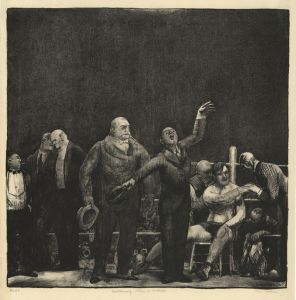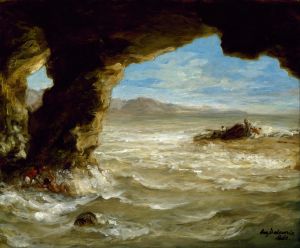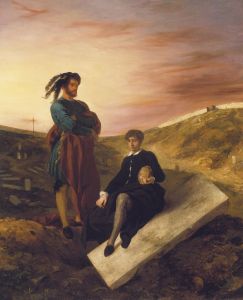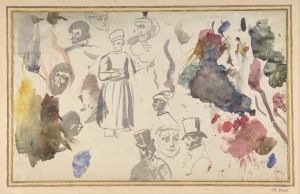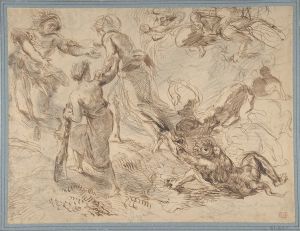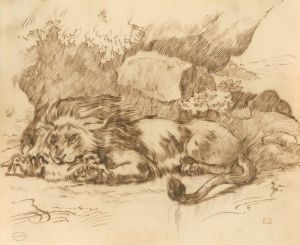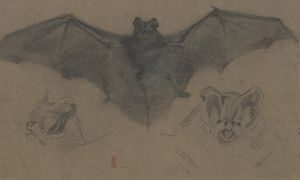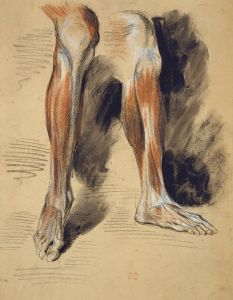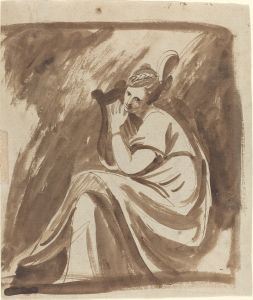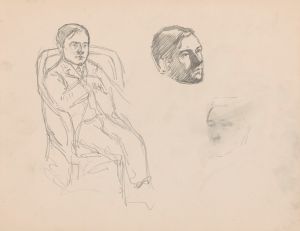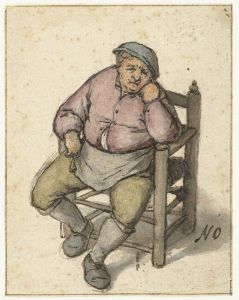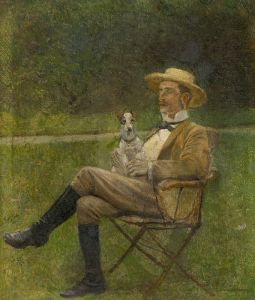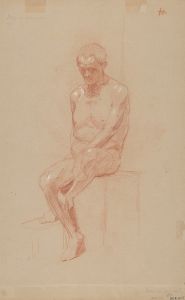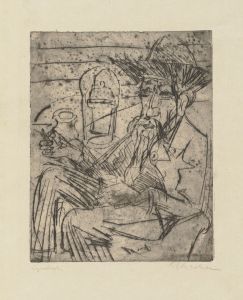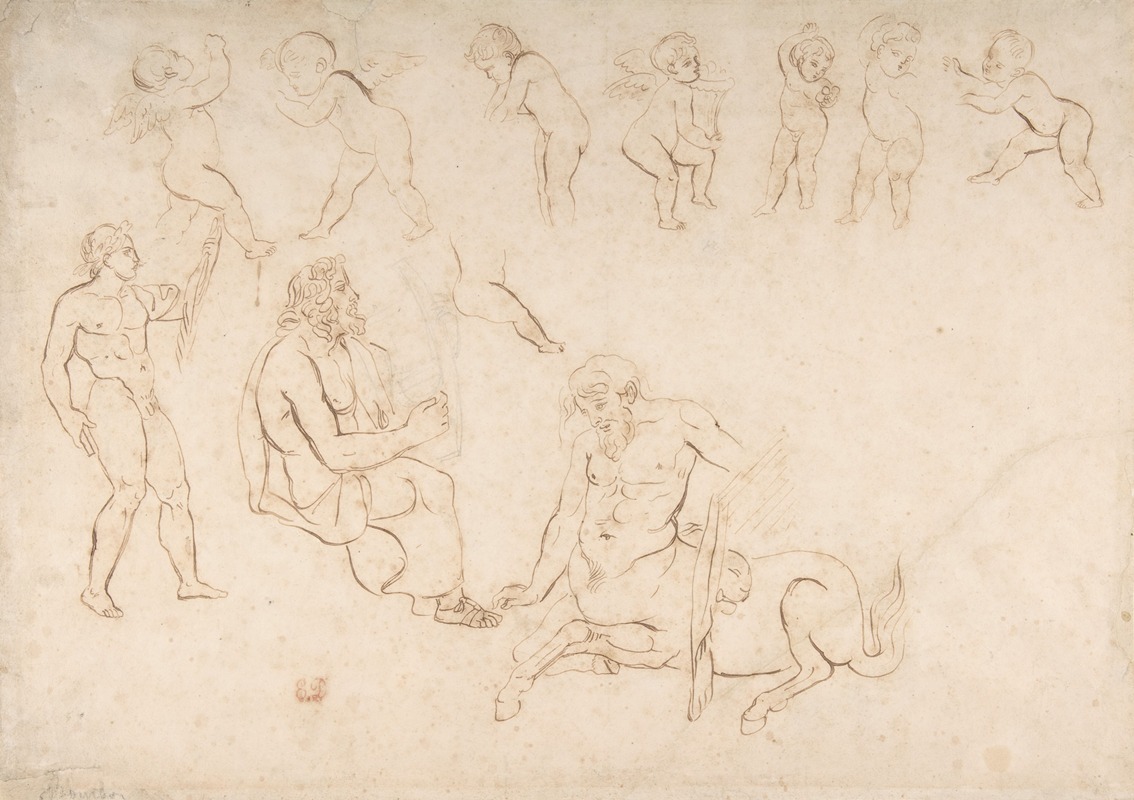
Standing nude athlete; seated man with a lyre; centaur; and seven putti
A hand-painted replica of Eugène Delacroix’s masterpiece Standing nude athlete; seated man with a lyre; centaur; and seven putti, meticulously crafted by professional artists to capture the true essence of the original. Each piece is created with museum-quality canvas and rare mineral pigments, carefully painted by experienced artists with delicate brushstrokes and rich, layered colors to perfectly recreate the texture of the original artwork. Unlike machine-printed reproductions, this hand-painted version brings the painting to life, infused with the artist’s emotions and skill in every stroke. Whether for personal collection or home decoration, it instantly elevates the artistic atmosphere of any space.
Eugène Delacroix, a prominent French Romantic artist, is renowned for his expressive use of color and dynamic compositions. Among his diverse body of work is the piece titled "Standing Nude Athlete; Seated Man with a Lyre; Centaur; and Seven Putti." This artwork reflects Delacroix's fascination with classical themes and his ability to convey complex narratives through vivid imagery.
Delacroix was born on April 26, 1798, in Charenton-Saint-Maurice, Île-de-France, and became one of the leading figures of the Romantic movement in France. His works often drew inspiration from literature, history, and mythology, which is evident in the thematic elements of this particular piece. The painting is a testament to Delacroix's skill in integrating multiple figures and motifs into a cohesive composition.
The artwork features a standing nude athlete, which may symbolize the idealized human form and the celebration of physical prowess, a common theme in classical art. The seated man with a lyre suggests a connection to music and poetry, possibly alluding to the ancient Greek tradition where the lyre was associated with the god Apollo and the muses. This inclusion highlights Delacroix's interest in the arts and their role in human culture.
The centaur, a mythological creature that is half-human and half-horse, represents the duality of human nature, a theme frequently explored in Romantic art. Centaurs are often depicted in Greek mythology as embodying both the civilized and the wild aspects of humanity, which may reflect Delacroix's exploration of the tension between reason and emotion.
The seven putti, or cherubic figures, add a playful and innocent element to the composition. Putti are often used in art to symbolize love, peace, and harmony, and their presence in this work may serve to balance the more intense and dynamic elements of the scene.
Delacroix's technique in this piece is characterized by his bold use of color and fluid brushwork, which create a sense of movement and vitality. His ability to capture the essence of his subjects with such vibrancy is a hallmark of his style and contributes to the enduring appeal of his work.
Throughout his career, Delacroix was known for his ability to blend traditional themes with innovative techniques, making his work both timeless and modern. "Standing Nude Athlete; Seated Man with a Lyre; Centaur; and Seven Putti" exemplifies this blend, showcasing his mastery of composition and his deep engagement with the cultural and artistic heritage of the past.
Delacroix's influence extended beyond his lifetime, impacting future generations of artists, including the Impressionists, who admired his use of color and expressive brushwork. His works continue to be studied and celebrated for their emotional depth and technical brilliance.
In summary, "Standing Nude Athlete; Seated Man with a Lyre; Centaur; and Seven Putti" is a rich tapestry of classical motifs, brought to life by Eugène Delacroix's artistic vision. The painting serves as a reflection of his ability to weave complex narratives through his art, leaving a lasting legacy in the world of painting.





